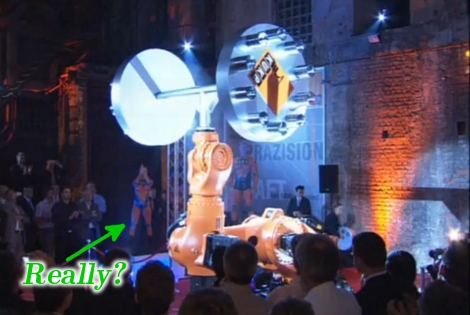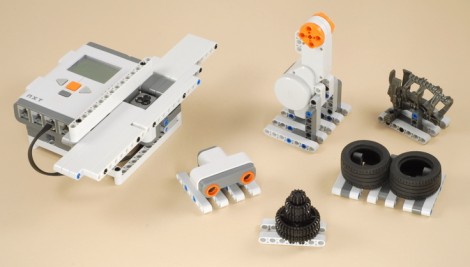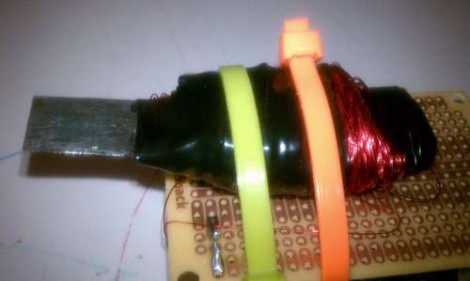
So this is the world’s strongest robot arm. Great… no really, that’s wonderful. We think lifting a 1000 kilogram dumbbell is a good way to show it off to the public. But with great power came the world’s most over-the top marketing. Well, maybe not as bad as the shake weight but it’s getting there. In the video after the break you’ll see that there is plenty of adrenaline-pumping music and they’ve hired an acrobat to pull a sheet off of the thing. We’ve pointed her out in the image above. [Caleb] noticed that they seem to have programmed in human kinetic to make it bounce and strain as a human lifting a heavy load would. And then there’s the fog machine. Classic. We also enjoy the use of a tap light (which we’ve seen around here before) to activate the demo.
But now we’re getting carried away. The article linked at the top covers a new development for the arm; a motorized base that can move it around. Looks like the base, which uses mecanum wheels, just slips under a stationary frame for the robot and lifts enough to truck it around.
Continue reading “Robot Bicep Curl Accompanied By Too Much Fanfare”
















